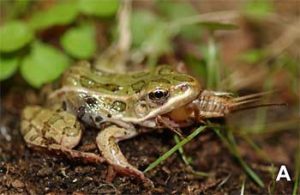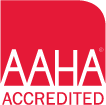Frog Husbandry

Frog are classified as amphibians and are termed as cold-blooded like reptiles, they may require external heating, cooling and control of the relative humidity to maintain peak health. Amphibians will perish if exposed to extreme temperatures for long periods and it is therefore important that thermostatic control is provided with any heating along with a thermal gradient and good ventilation. When looking at setting up housing for any species it is important to consider the specific requirements for heating, cooling, relative-humidity control. Tank/cage size and substrate and cage decoration and furniture.
Housing
 Making sure your enclosure is big enough for your frogs to grow and move around is very important. The
Making sure your enclosure is big enough for your frogs to grow and move around is very important. The
enclosure should have a basic substrate; pebbles, Peat moss and potting mixture can be used. If pebbles are to be used it is best to cover them with moss to prevent frogs swallowing pebbles. Heaters and filters can be used to provide a warm and natural environment, placing a thermometer in the enclosure is the best way to ensure the heat is at the appropriate level between 72-80 degrees. It is best to use waterproof aquarium heaters for safety purposes. Filters assist in maintaining clean water and running water also boosts humidity levels. When using any water for the habitat make sure that it has been dechlorinated first. This can be done by placing the required amount of water from a town water supply in an open top bucket for several days and allowing all chlorine to dissipate before using it for frogs. Set up a regular checking and cleaning regime
Clean Cages are a must for frogs, which can easily absorb toxins from their surroundings through their skin.
Feeding
Frogs prefer live food such as crickets, cockroaches and mealworms. It is the movement of such insects that stimulate the frog to hunt and eat the prey. If frogs are fed dead prey, it must be offered by hand. Most insects are not very nutritious, insects can be dusted with a powdered vitamin supplement prior to feeding out to enhance their nutritional value. A balanced diet also includes offering your frog a variety of food types/insects. Gut loading insects is a useful in boosting their nutritional value. This is done by placing the insect in a separate container with grated spinach, carrots and kale with a multivitamin mix 24-48 hours prior to feeding.
Some common food items include:
• Crickets
• Grasshoppers
• Flies
• Moths
• Cockroaches
• Earthworms
• Mice-pinkies or newborn mice and fuzzies or weaner mice. It is best to leave newborn mice with their mother for at least 3 days prior to feeding out to ensure adequate nutritional levels. Pinkies can be offered alive, but fuzzies should be observed closely and if not eaten be immediately removed from the cage as they may injure frogs.
.
Veterinary Care
Frogs can have a lot of different problems raging from sores, parasites, environmental and nutritional issues. It is important to get your frog to the vet if it is exhibiting any of these symptoms, weight loss, blood feces, open wounds,
cloudiness of the eyes, lack of appetite, bloating or if it has a dry appearance.



Comments are closed.